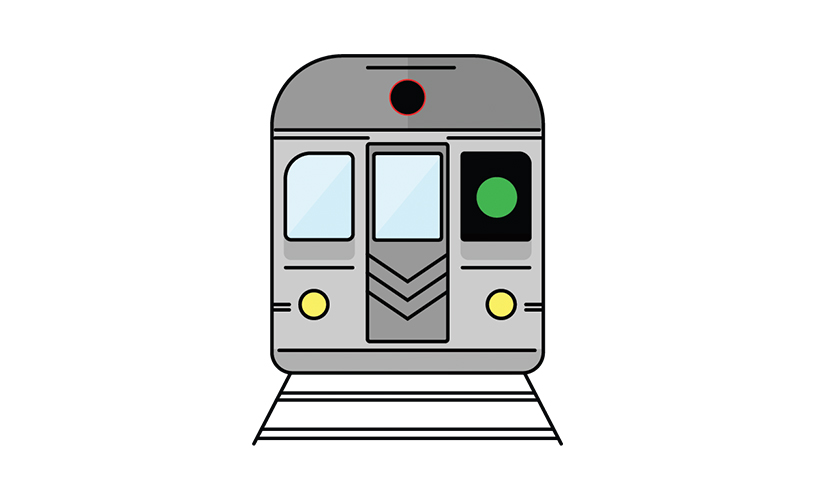 When historians look back at 2016 and read the media’s coverage of U.S. politics, they will likely be overwhelmed by horse race analysis and alarming campaign rhetoric. What they will struggle to find is meaningful discussion about the complex issues that significantly impacted our citizens, or any bold plans to tackle the most troubling issues facing our city, state, country or planet.
When historians look back at 2016 and read the media’s coverage of U.S. politics, they will likely be overwhelmed by horse race analysis and alarming campaign rhetoric. What they will struggle to find is meaningful discussion about the complex issues that significantly impacted our citizens, or any bold plans to tackle the most troubling issues facing our city, state, country or planet.
We at City & State set out to do our small part to fight back against this trend. Through a series of discussions, we decided to highlight several of the best ideas put forth, promoted or passed in 2016. Our focus was mostly on ideas impacting New York City or New York state, but we also cast our net wider to find ideas we thought were worth praise or further examination.
Where possible, we gave deference to ideas generated by elected officials in positions to champion their cause. But we also turned to concepts put forth by advocacy groups, think tanks, and even the media.
We considered several dozen ideas in our deliberations, but landed on six that address unique concerns facing our society. They touch on education, mental health, equity for the poor and reforming government, and our selection serves as an endorsement of either the specific policies and proposals or the goal they seek to achieve.
The following is our list of 2016’s very best ideas:
 Right to counsel bill
Right to counsel bill
To be a low-income tenant in an increasingly gilded and unaffordable city, such as New York, is to confront a constant anxiety that you could one day suddenly find yourself without a roof over your head. With property owners and their lobbyists systematically trying to strip tenants rights and protections, beginning with the neutering of state rent-regulation laws, this palpable fear is still a harsh reality, with almost 22,000 evictions last year out of more than 300,000 brought to New York City Housing Court, punctuated by the confusion those tenants face when fighting unscrupulous landlords with far better resources.
To the city’s credit, they happen to be acutely aware of this problem, with Mayor Bill de Blasio increasing funding in this year’s budget to bolster legal services, and the city’s Office of Civil Justice noted that more than 70 percent of low-income tenants in New York City go without lawyers in housing court.
But a bill proposed by Councilman Mark Levine of upper Manhattan would go much further in solving this problem. Levine’s right to counsel bill would make New York City the first jurisdiction in the country to guarantee lawyers for any low-income residents facing eviction. Tenants who make below 200 percent of the federal poverty line ($23,760 annually for a single person; $48,600 for a family of four) would qualify for an attorney.
The bill has gained widespread support in the Council and from tenants’ rights advocates, with good reason. A Legal Aid Society study found that tenants who have lawyers have a far lower chance of getting evicted. The main obstacle for Levine in getting his bill to the Council floor for a vote is cost: an estimated $200 million, according to a report by an independent advisory firm for the bar association. However, the additional cost to the city was offset by an estimated $300 million in savings by keeping thousands of families off the streets or in homeless shelters due to eviction. The bill would also theoretically deter landlords from going through the eviction process. Many housing advocates agree that landlords use the threat of eviction as an intimidation tactic because tenants know they can’t afford the legal process. The guarantee of effective legal representation for tenants would change that and save the city money by alleviating the burden on an already backlogged court system.
De Blasio has praised the idea in theory, and previously said that the federal government should pick up the tab, which seems unlikely given the philosophy of President-elect Donald Trump. But at a time when the mayor is gearing up for re-election, the passage of the right to counsel bill would bolster his progressive credentials and likely motivate a plurality of tenants to go to the polls in November 2017.
 Public Defense Mandate Relief Act
Public Defense Mandate Relief Act
When New York conservatives talk about the pressing need for localities to have “mandate relief,” the typical targets are areas like property taxes, pensions, and welfare programs. The basic philosophy is that these “unfunded mandates” take tax dollars from localities and limit their ability to provide basic services or invest in projects their constituents want. It’s a sometimes reasonable argument that doubles as a proxy for a libertarian-esque desire to shrink government as much as possible.
But there are sensible mandate relief policies that don’t involve the demonization of public servants and low-income New Yorkers who rely on the government safety net. One such proposal stands out this year – the Public Defense Mandate Relief Act introduced by Democratic Assemblywoman Patricia Fahy – a common sense bill that would reform public defense services statewide and also alleviate the financial burden of providing that service. The ballooning cost of maintaining a public defender program caused five New York counties to successfully sue the state for reimbursement in 2014.
Fahy’s bill, which passed the Assembly and Senate during the 2016 legislative session and is currently awaiting the governor's signature, would transfer the responsibility for funding of public defense from the counties to the state over a seven-year period. It would require the state to reimburse localities for legal services, a response to the state’s recent initiative to raise the income threshold for free legal services to individuals making under $47,000 a year. The bill would also authorize the state Office of Indigent Legal Services to ensure that poor people accused of crimes are given effective legal representation when they can’t afford a lawyer.
While certainly not as sexy as some of the other big ideas this year, the state of public defense in New York has been a focus of groups like the New York Civil Liberties Union for some time. The state’s public defense system was described as an ongoing crisis in an extensive 2006 report by former Chief Judge of the New York Court of Appeals Judith Kaye, with inadequate resources and compensation, a lack of communication with the attorneys and defendants, and excessive eligibility standards thatkeep poor people from getting good counsel.
It’s rare to find a mandate relief bill with bipartisan support, and with Fahy doing Senate sponsor John DeFrancisco (the Republican deputy majority leader) part, it’s on Gov. Cuomo to push it across the finish line.
 “Fair Fares” campaign
“Fair Fares” campaign
Some of those people asking for a swipe at the subway station could just be trying to get to work. According to Community Services Society’s Unheard Third survey, one in four low-income working-age New Yorkers in the “most transit-dependent city in the nation” often cannot afford bus and subway fares. With MTA fares likely to go up again in 2017, poverty alleviation nonprofit CSS partnered with straphanger advocacy group the Riders Alliance in April to call for half-priced metrocards for low-income New Yorkers – and a big idea was born. So far, more than 24 advocacy, legal, labor and community-based organizations have signed on to the “Fair Fares” campaign.
Momentum is growing. In October, CSS released a letter to Mayor Bill de Blasio asking for funding to be included in his fiscal year 2018 executive budget to support the measure. CSS estimates that, if implemented, the city would owe the MTA about $200 million in lost fare revenue. New York transit riders between the ages of 18 and 64 living in households with incomes at or below the federal poverty level ($24,300 for a family of four) would save up to $700 a year. The letter was signed by 27 City Council members, New York City Public Advocate Letitia James, City Comptroller Scott Stringer and 26 organizations.
De Blasio should think long and hard about heeding their call if he wants to keep his job. According to CSS survey results, 62 percent of respondents said they would be more likely to vote for a mayoral candidate who promised to make half-price fares available to low-income riders and the proposal was particularly popular with blacks and Latinos who identified themselves as Democrats.
It’s not necessarily an innovative idea, as similar proposals have been successful in cities, such as San Francisco and Seattle, and are under consideration in Boston and Denver. But with most jobs based in Manhattan and the bulk of affordable housing being built in the outer boroughs, it certainly would have a big impact on commuters.
 Thrive NYC
Thrive NYC
During a weekend in May, some 1,000 faith communities in New York City took part in the first Weekend of Faith for Mental Health. It was a particularly significant milestone within African-American churches where mental illness is too often a third rail charged by long outdated beliefs that spiritual – not chemical – imbalances are the primary cause of the disease. But it was also a significant milestone on the Mental Health Road map, a package of 54 initiatives costing $850 million over four years and spearheaded by New York City’s first lady Chirlane McCray. This project dares to take a heavily stigmatized illness affecting one in five New Yorkers and make it a topic of discussion from senior citizen centers to synagogues to City Hall.
The plan of action, announced in January 2015, also includes efforts to address substance abuse disorders influenced in part by her own family’s struggle to meet the needs of their daughter Chiara, who suffered with anxiety, depression and addiction. It is strikingly comprehensive – driven in part by necessity since there was not much of a framework in place. It includes 23 new initiatives – like starting an NYC support line for individuals in crisis and convening a mental health council – many of which are already underway or on schedule to be rolled out.
With mental illness behind many home-grown terrorist attacks, Rikers Island is overflowing with those who’d be better served in psychiatric hospitals than prison cells, and many communities facing a flood of individuals reentering society after serving sentences meted out by disastrous drug laws pursued in the wake of a crack epidemic that was badly framed as a crime epidemic instead of a public health one. This is a big idea whose time has certainly come.
The first lady seemingly has considerable pull when it comes to making sure her husband finances the project: Mayor Bill de Blasio announced in January that every Thrive NYC initiative was funded in the Fiscal Year 2017 preliminary budget. And now, McCray is taking the concept nationwide with the Cities Thrive Coalition, an effort to build a national network of more than 300 cities to advocate for mental health reform; more than 70 mayors have signed on so far. Let’s hope the trend continues. This initiative is bound to leave an indelible mark on New York City’s government, its people and perhaps the whole nation.
 Let voters decide on term limits
Let voters decide on term limits
In the recent back and forth over a potential special legislative session in Albany, an intriguing idea was promoted by Gov. Andrew Cuomo to put the idea of term limits before the voters in a constitutional amendment. There are thoughtful and reasonable arguments on both sides of the issue of term limits. Those who support the idea will say that bringing new people into the process leads to better ideas and less corruption. Those opposed will argue that simple act of limiting terms is actually taking rights away from voters by limiting their choice. Others will say having long-serving members brings a sense of institutional knowledge that makes government work better.
We are not taking a side on this debate. But we are supporting Cuomo’s move to put this issue before voters to let them decide and we encourage the Legislature to strongly consider moving this idea forward. Sure, they may lose out on long-term job security, but the sheer logistics of passing this measure through constitutional amendment would make sure that they would have roughly a decade to prepare for the change. Plus, giving voters some say would surely gain them back some much-needed goodwill, considering both the Assembly and state Senate’s favorability ratings were under 50 percent in the Siena College Research Institute poll this month.
Cuomo’s plan would propose changing lawmakers terms from two years to four years and then limiting them to two terms, so they can only serve eight years total. Republican state Sen. Joe Griffo and Democratic Assemblyman Mickey Kearns have a similar bipartisan bill that would leave the terms at two years, with a maximum of six terms, or 12 years of service total. Again, there are positives and negatives on both of these ideas. Extending the terms to four years could allow lawmakers to spend less time fundraising, but it also takes power away from voters to change the Legislature more frequently.
The bottom line is that voters deserve a shot to weigh in on either option, or a similar alternative.
 Free college tuition
Free college tuition
The idea of providing free education for students through college makes sense in the modern world because it has become necessary to have a post-secondary degree in the competitive professional workforce. During the 20th century, our government and the people felt it was necessary to provide free education through 12th grade so that students were prepared for the world and the workforce, right? Well today, it’s clear that a college education is a basic requirement for many young workers.
Democratic presidential candidate U.S. Sen. Bernie Sanders ran a very successful campaign with this very issue a key component of his platform. In the end, he lost. But campaigns are about more than just the horse race. They are a dialogue with the people about our priorities and aspirations and when losing candidates bring forward an idea worth exploring then our country’s leaders should not dismiss it.
In the campaign, Sanders took a lot of criticism over his plan to pay for free college tuition. Simply put, he wanted to tax Wall Street speculators. That sounds nice in a campaign, but is likely far more complicated and politically messy in practice. Finding and guaranteeing funding for any big idea is usually an ugly process. It is not a valid excuse for leaders in Washington D.C. to dismiss a good idea simply because it is going to be hard to implement. That is just cowardice.
Others will say the private sector has provided ample opportunity for our youth to go to college. But the reality is that these methods force many poor and middle-income youth to choose a path that leads to massive debt, while their wealthier counterparts are spared such a burden. This perpetuates inequality in our society. Further, some of our best and brightest youth are left behind, leaving our country with a deficit in intellectual capital.
Our youth deserve better. Free college tuition is one way to give all children a fair shot at a pathway to prosperity. And that is a fundamental tenet of the American dream, which, sadly, millions of people feel is now out of reach.
A few more good ideas
City & State’s editorial board discussed several dozen ideas before landing on the six we highlighted in this section. But several other ideas received votes, and at times passionate pleas, from our team. Here are a few of them.
Closing Rikers: The push to shut down the jail has gained a lot of public momentum this year and politicians are starting to take some action to make this a reality, but there is still no clear plan forward on the issue.
Build the BQX: The idea of an above-ground tram connecting the most vibrant waterfront communities in Brooklyn and Queens is a good one, if for no other reason than it would give straphangers a much-needed alternative transportation option to get between the two boroughs.
Home-Stat: Making an effort to actually count and track the homeless in New York City is daunting, flawed, and some could argue, it is possibly even politically suicidal. But it is the right thing to do and the city should be applauded for launching the program.
Paid Family Leave: One of the signature achievements of Gov. Andrew Cuomo and the state Legislature this year was passing the Paid Leave Law, which, starting in 2018, will give all employees, men and women, 12 weeks of paid leave to care for a new child, a sick relative or to help families of active military service. It’s legislation long overdue.
Penn Station redesign: In September, The New York Times editorial board asked architect Vishaan Chakrabarti to redesign Penn Station as a towering structure of glass that would be an iconic structure in the city, while also accounting for needed transportation upgrades.
President-elect Donald Trump reappointing U.S. Attorney Preet Bharara: On this, PEOTUS made the right call by keeping the public corruption crusader on the job.
The City & State Editorial board members are Editorial Director Michael Johnson, Opinion Editor Nick Powell, Editor-at-large Aimee Simpierre, Editor-at-large Gerson Borrero, and President and CEO Tom Allon.
Correction: A previous version of this article inaccurately stated that the Public Defense Mandate Relief Act failed to pass the state Senate. The bill passed both the Senate and Assembly in 2016 and its fate rests with Gov. Andrew Cuomo.
NEXT STORY: Expert opinions on MOME


